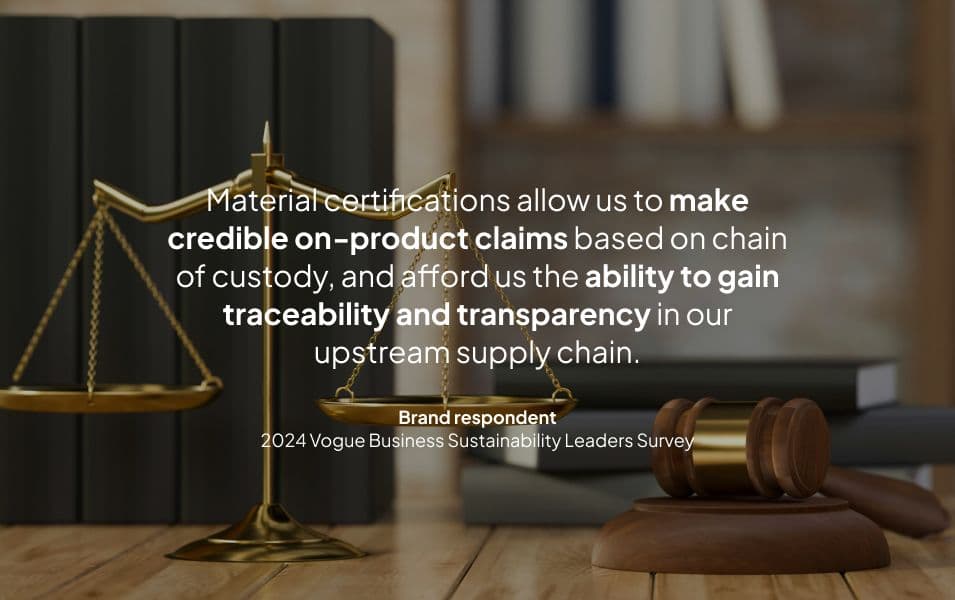Tocco Report: Material Certification Manual 2025-2026
The Essential Playbook for Certification Strategy & Market Access
The Tocco Material Certification Manual 2025-2026 is intended as a working reference for professionals involved in material selection and compliance. It is structured to support both new entrants and experienced practitioners across product design, packaging, procurement, and regulatory roles.
As certification frameworks continue to gain regulatory and commercial relevance, fluency in this domain has shifted from optional to operational. Certification systems—spanning claims around recycled content, organic sourcing, chemical safety, carbon reporting, and chain-of-custody—now do play a key role in market access and product legitimacy. For manufacturers, designers, and corporate sustainability officers alike, these labels increasingly signal due diligence to investors, retailers, and regulators.
For the untrained eye, certification schemes can resemble a maze—fragmented, overlapping, and often laden with technical language. Differentiating between mandatory regulation and voluntary leadership, or between material-specific and cross-sectoral systems, can feel opaque at the outset. This manual is intended to demystify that process.
We hope to provide a clear outline of certification systems across sectors, including wood, textiles, polymers, composites and so forth. We identify key standards, overlaps between schemes, and regional regulatory considerations.

Explore This Report
Start with the Free Version or unlock the Full Report with deeper insights, case studies, and extra content.
- Understanding Material Certifications:
Definitions & Taxonomy - Key Certification Programs & Standards:
By Material & Sector - Regulatory Outlook by Region:
Europe, North America & Asia - Case Studies of Overlaps:
Managing Multiple Certifications - Relevance to Health, Climate, Biodiversity & Carbon :
Why Certifications Matter for the Bigger Picture - Strategic Use of Certifications:
What to Choose for Your Use Case - Tools & Platforms for Certification Tracking & Management

Materials in focus
Explore the innovative materials shaping the future

Biodegradable

Recycled

Bamboo

Mycelium

Silk
What's inside?
The U.S. leans heavily on the Federal Trade Commission’s Green Guides—last updated in 2012, with a new revision pending—to curb misleading environmental marketing. These guidelines outline key principles, such as: companies shouldn’t label a product “recyclable” if local recycling options are limited, and the term “biodegradable” shouldn’t be used unless the product breaks down quickly under typical disposal conditions. Although not legally binding on their own, the Green Guides are enforceable through consumer protection laws, and the FTC has issued warnings and fines for violations. All this plays out against the backdrop of the Trump administration's continued rollback of environmental regulations.
 something
somethingOther Available Reports
Expand your knowledge with our curated collection of industry-leading insights
Latest Design Stories
Weekly highlights from our community of innovators and pioneers